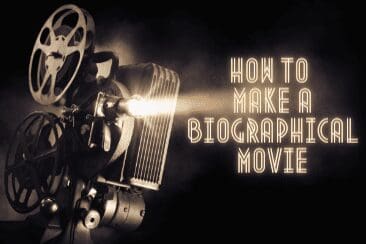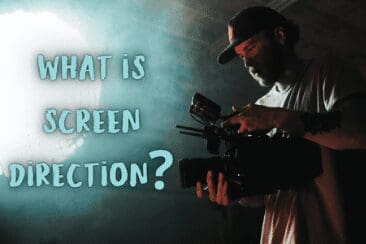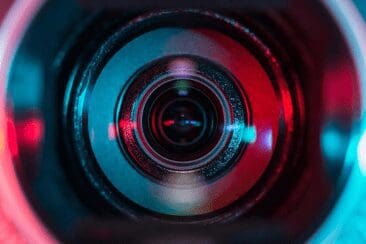Film theory is the set of scholarly approaches within the academic discipline of film studies that seek to understand the essential nature of the cinema and provide conceptual frameworks for understanding film’s relationship to reality, the other arts, individual viewers, and society at large. Film theory is not to be confused with general film criticism, though the two are closely related. Join us as we delve deeper into the discipline that is film theory.

What Is Film Theory?
Film theory attempts to answer a variety of questions and issues related to the film medium. These include questions about the ontology of the cinema (what is the nature of a film?), the nature of film aesthetics (how do films create meaning?), and the social and political implications of film (how does film shape and reflect culture?).
The development of film theory has been closely connected to the emergence of film as an art form, with the earliest theories emerging at the same time as the first narrative films. As the medium has evolved, so too has the theoretical discourse surrounding it. This discourse has been shaped by various intellectual movements, including structuralism, psychoanalysis, and postmodernism, all of which have had a profound influence on the development of film theory.
Film theory has been used to analyze a variety of films, from classical Hollywood to avant-garde, from silent films to contemporary blockbusters. It has also been used to explore the relationship between film and other art forms, such as literature, painting, and music. In addition, film theory has been used to examine the ways in which films reflect and shape our understanding of gender, race, class, and other social issues.
Film Criticism Vs Film Theory
Film criticism and film theory are two distinct fields of study in the world of film. Film criticism is the analysis and evaluation of films, typically through reviews, interviews, and other forms of media. It focuses on the aesthetic aspects of film, such as its visual style, narrative structure, and themes. It also examines the cultural and social context of films.
Film theory, on the other hand, is the academic study of film. It seeks to understand the deeper meaning behind films, exploring their philosophical, political, and social implications. Film theorists use various analytical tools, such as semiotics, psychoanalysis, and Marxism, to evaluate films. They also examine how films shape our perceptions of the world and how they reflect our own cultural values and beliefs.
Elements Of Film Theory
In terms of film terminology, there are plenty of elements of film theory you should know. So let’s get going.
Mise-en-scène
Mise-en-scène film theory is a type of film analysis that focuses on the visual elements of a film. This includes the arrangement of actors, props, and settings within a scene, as well as the use of lighting, color, and camera angles to create meaning. The term mise-en-scène is French for “putting into the scene” and is used to describe the way a director creates a narrative through the visual elements of a film.
Mise-en-scène film theory is often used to examine how a film conveys a particular message or theme. It is also used to analyze the ways in which a director uses visual elements to create a particular mood or atmosphere. By studying mise-en-scène film theory, viewers can gain a greater understanding of how a film is constructed and how it conveys meaning.
Cinematography
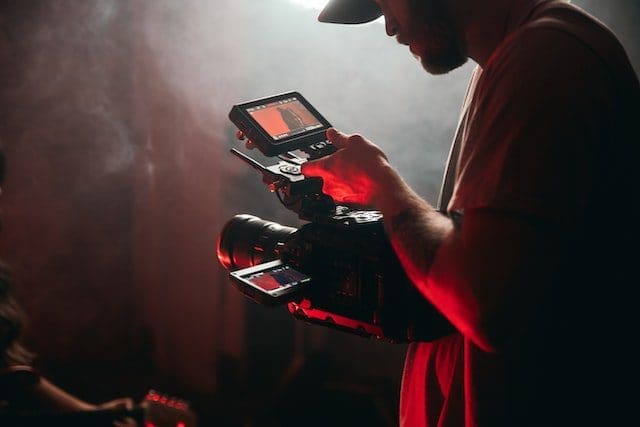
Cinematography film theory is a branch of film theory that focuses on the visual elements of film, such as lighting, composition, camera movement, and the use of color. It studies the way in which the visual elements of a film can be used to create meaning and evoke emotion.
Cinematography looks at the ways in which camera angles, camera movement, and other elements of the visual language of film can be used to create a certain mood or atmosphere. It also examines how the visual elements of a film can be used to tell a story or convey a message. We will go further into detail about these different aspects of cinematography and discover how crucial the relationship is between the director and cinematographer on a film.
Famous Cinematographers
Sir Roger Alexander Deakins CBE – Roger is an English cinematographer, best known for his collaborations with directors the Coen brothers, Sam Mendes, and Denis Villeneuve. He is best known for how work on films such as 1917, Empire of Light, Fargo, Skyfall, No Country For Old Men, True Grit, and The Shawshank Redemption.
He is a true genius of his craft and if you watch just one of his films, you will understand what I mean. He was awarded with the Academy Award for Best Cinematography in 2018 for Blade Runner 2049 and also in 2020 for 1917.
Robert Bridge Richardson, ASC – Robert is an American cinematographer. He has won the Academy Award for Best Cinematography three times, for his work on JFK, The Aviator, and Hugo. Robert Richardson has been the cinematographer of choice for Quentin Tarantino, Martin Scorsese, and Oliver Stone over the course of his long career.
Vittorio Storaro, A.S.C., A.I.C. – Vittorio is an Italian cinematographer widely recognized as one of the best and most influential in cinema history, for his work on numerous classic films including The Conformist, Apocalypse Now, and The Last Emperor.
Lighting

Lighting with regard to film theory is a set of principles that filmmakers use to create a desired look and feel for a film. It involves understanding the different types of lighting and how they interact with the environment and the characters in the film. It also involves understanding how to use lighting to create atmosphere, mood, and emotion.
Lighting is a critical part of creating a successful film, as it can have a huge impact on how the audience perceives the story and the characters.
In terms of lighting, film theorists do focus on the following;
- High-key lighting – High key lighting is a type of lighting technique that is used to create a bright and airy atmosphere. It is often used in fashion photography and film to create a dreamy, ethereal look. High key lighting typically involves using several light sources that are positioned around the subject in order to achieve a bright and even illumination. The light sources are usually placed at a high angle to create a sense of openness and airiness. This type of lighting can be used to create a sense of drama or to emphasize certain features of the subject.
- Low-key lighting – Low key lighting is a style of lighting that is used to create a moody, dramatic effect. It is achieved by using a single, strong light source that is placed low and close to the subject. The light is usually diffused and pointed toward the subject from the side or from below. This type of lighting often creates strong shadows and highlights, which can be used to create a sense of mystery and drama. Low key lighting is often used in film noir and horror films to create a dark and eerie atmosphere.
- Chiaroscuro lighting – Chiaroscuro lighting is a type of lighting technique used in photography and cinematography to create dramatic contrast between light and dark. It is used to emphasize certain elements of a scene, and create a sense of depth and atmosphere. This technique is achieved by using a combination of bright and dark lighting, often with a single light source. The result is an image with strong contrast between light and dark areas, with a moody and mysterious feel.
- Silhouette/black lighting – Silhouette or black lighting is a type of lighting used to create dramatic effects on stage. It is a technique where the background is illuminated with a bright light, while the performers are lit with a much darker light. This creates a stark contrast between the two and makes the performers appear as silhouettes against a bright background. This technique is commonly used in theatre, film, and television to create a dramatic effect.
Editing
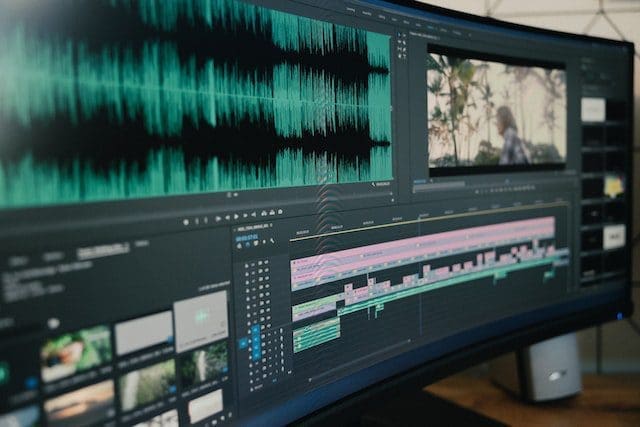
Editing is the process of selecting and arranging shots to create a unified whole. This process will be done towards the end of the project, once the main filming is done.
Editing is an important element of film theory and it can be used to create a certain mood or atmosphere, to make a point, or to tell a story. It is also used to create continuity between shots and to make the film easier to understand.
Editing can also be used to create a sense of suspense or tension. In recent years, digital editing has become increasingly popular and has allowed filmmakers to experiment with different film editing techniques.
Editing is a crucial part of filmmaking and is used to create a cohesive story, enhance the pace of the narrative, and manipulate the viewers’ emotions.
For example, the following are some of the most common editing techniques used in film:
Cut -The cut is the most basic and widely used editing technique. It involves cutting from one shot to another, usually with no transition or effect. This is used to quickly move the story forward or to transition between scenes.
Montage – A montage is a sequence of shots that are edited together to illustrate a concept or tell a story. This technique is often used to convey a lot of information in a short amount of time.
Cross-Cutting – Cross-cutting is a technique used to quickly transition between two or more scenes. It is often used to show simultaneous actions taking place in different locations.
Match Cut – A match cut is an edit that links two shots together by matching the action or composition of each shot. This is used to create a smooth transition between scenes.
Jumps Cut – A jump cut is an edit that cuts out a section of the action, resulting in a jarring effect. This technique is used to create tension and move the story forward quickly.
Slow Motion – Slow motion is a technique used to slow down the action in order to create a dramatic effect. This technique is often used to emphasize a particular moment or to create a sense of awe.
Sound
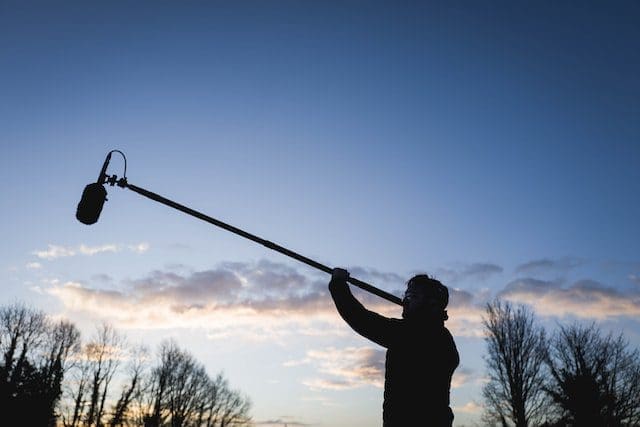
Sound techniques in film theory involve the use of sound and music to create an emotional response in the viewer. This can be done through the use of sound effects, dialogue, and music.
Sound effects – these are used to create a physical response in the viewer. This can be done through the use of loud noises, such as explosions, to create tension or the use of silence to create suspense.
Dialogue – this can be used to convey character emotions and to move the story forward. Dialogue can also be used to create a sense of atmosphere and to establish the setting. Music is used to create an emotional response in the viewer.
Music – this can be used to create a sense of tension, suspense, joy, sadness, and even fear. Music can also be used to create a sense of time and place.
Narrative Structure
Narrative structure in film is the way in which a story is presented to the audience. It is the overall framework or structure of a film, and it is often used to help the audience understand the plot and characters.
Narrative structure in film typically follows a three-act structure, which is divided into the setup, the conflict, and the resolution.
In the setup, the audience is introduced to the setting, the characters, and the overall premise of the story.
In the conflict, we see the characters struggle against obstacles that stand in their way of achieving their goals.
Finally, in the resolution, the characters either succeed or fail in their mission, and the story comes to a close.
Other narrative structures in film can include non-linear storytelling, which jumps around in time and space, and flashback sequences, which provide the audience with important information from the past.
No matter what narrative structure is used, the goal is to keep the audience engaged and entertained throughout the film. By using a well-crafted narrative structure, filmmakers can ensure that their story is properly told and that their audience is able to follow and appreciate the story.
Genre
Genre in film is a way to classify and categorize films according to the type of content they contain. Common genres in film include action, adventure, comedy, drama, horror, romance, sci-fi, and western. Each genre has its own set of conventions, tropes, and expectations that help to define it. Have you got a favorite? I would be able to watch any type of film, even though I’m not the best when it comes to horror.
Aesthetics
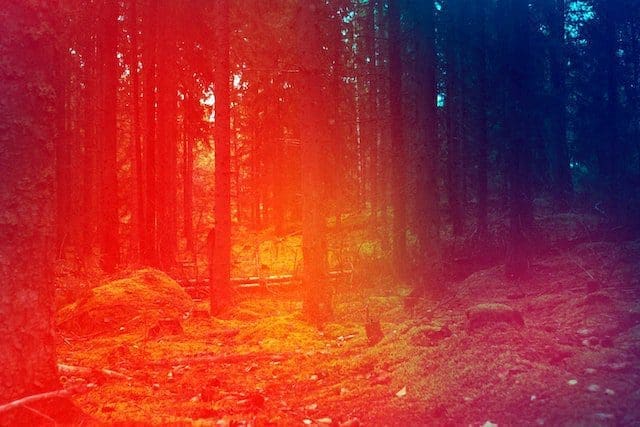
Aesthetics in film refer to the visual elements in a movie that create a certain atmosphere or tone. This includes the use of color, lighting, camera angles, set design, and other techniques to create a particular look and feel.
Aesthetic elements can be used to enhance the story, create a certain atmosphere, or draw attention to specific aspects of the plot. They can also be used to evoke emotion or suggest a certain mood.
Film theorists focus mainly on two types of colouring;
Saturated – Vivid color used for fantasy, romance, and conveying happiness
Desaturated – Muted color used for dystopian films and conveying depression and struggle
Performance
Performance in film theory is a branch of film studies that examines the performance of actors and other individuals involved in the production of a film. It looks at the ways in which performers use their bodies, voices, and expressions to create meaning and emotion in a film. It also examines the ways in which a director or other filmmakers use performance to shape the narrative and aesthetic of a film.
Performance in film theory is closely related to other branches of film studies, such as cinematography, mise-en-scène, and editing.
Ideology
Ideology in film theory is the study of the ways in which films represent, reflect, and shape the beliefs, values, and social norms of a given society. It is the examination of how films and other media texts construct and reinforce ideologies of race, gender, sexuality, class, and other social categories, and how these ideologies shape our understanding of the world.
Ideology in film theory is concerned with how films can be used to reinforce dominant ideologies or to challenge them, and how films can be used to shape and influence public opinion.
Audience Reception

This is the way viewers that interpret and respond to a film. Audience reception is an important part of film theory, as it helps to understand how films are received by viewers and how they are interpreted. Audience reception can be studied using various methods, such as surveys, focus groups, and interviews. By studying audience reception, film theorists can gain insight into how films are interpreted, how they are perceived, and what kind of emotional and intellectual responses they elicit. This can provide valuable information for filmmakers in terms of how to craft their films in order to maximize audience engagement.
Additionally, audience reception can be used to understand the impact of films on society, and how films shape public opinion and attitudes.
Bechdel Test
Now many of you might know what this is in reference to, but The Bechdel Test is a measure of gender equality in films.
To pass the test, a film must meet the following three criteria:
1. It must have at least two female characters.
2. These two female characters must talk to each other.
3. They must talk to each other about something other than a man.
The films that have passed this test include the following;
- “Kill Bill” Volumes 1 and 2 (2003–2004)
- “Frozen” (2013)
- “Mad Max: Fury Road” (2015)
- “Hidden Figures” (2016)
- “Wonder Woman” (2017)
- “CODA” (2021)
Marxist Film Theory
Marxist film theory is a branch of film theory that uses the theories and philosophy of Karl Marx to analyze film. It looks at the role of film in the context of the larger socioeconomic structure and examines how films can reflect and influence social change.
Marxist film theorists focus on the power dynamics between the dominant classes and the subordinate classes, as well as the ideological messages that films may contain. Marxist film theorists use Marxist ideas to analyze films in terms of their class-based content, their representation of social and economic power, and their potential to influence social and political change.
Theorists such as Slavoj Žižek, Fredric Jameson, and Theodor Adorno have all contributed to Marxist film theory.
Film Studies Courses

There are plenty of film studies courses, whether that be in person or online, you can take now where you can understand more about film theory if this is a vocation you have chosen for yourself. You could take an Introduction To Film Studies course, which provides an introduction to the study of film.
You would delve deep into the history and development of the film industry, film genres, the language of film, and film criticism.
As a student, you would gain an understanding of how different aspects of film production and aesthetics influence the meaning of a film.
In more details, the common modules you would examine in a film studies course would include the following;
Common modules for film studies include:
- Production skills
- Concepts and history
- Scriptwriting
- Research methods
- Film curation
- Film, literature, and adaptation
- Contemporary cinema
- Film history
- Film genres
- Film and culture
- World cinema
- Documentary
Closing Thoughts
Now you are a film theory pro after having read this article! If you have chosen film as your career, there are so many different avenues you can take as you can see. So the best piece of advice I can give you is to get as much experience as you can, whether that be through a film course or being on set. I would actually suggest being on set and being surrounded by film professionals is the best way to learn. You will also build up your skillset and crucially build up a great network of film professionals as you go. As long as you have the passion and drive for this type of career – and don’t mind working long hours – it will be such a rewarding job. You never know, you may be up on stage collecting your Oscar one day. Good luck!






